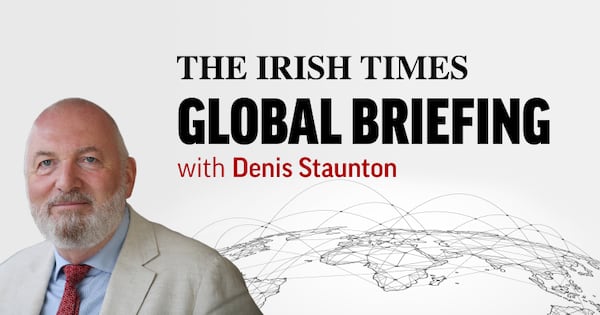Just shy of seven months into his papacy, Leo XIV, the first pope from the United States, will take off on his first international trip on Thursday – Thanksgiving Day – travelling to Turkey and Lebanon for a six-day tour.
The choice of the pope’s first foreign destination is always watched closely for clues to his global priorities. Early in his papacy, observers wondered if Leo, who was elected in May, might select the United States, his homeland; Peru, the country where he served for two decades as a missionary and bishop and was naturalised as a citizen; or perhaps Algeria, the birthplace of St Augustine, the namesake of the religious order that Leo once led.
Instead he will head to a war-torn region wracked by religious divisions, providing him with the deepest diplomatic and geopolitical challenges of his tenure so far. He will meet with religious leaders inside and outside the church, as well as with president Recep Tayyip Erdogan in Turkey and president Joseph Aoun in Lebanon. He will rally the faithful as he visits hospitals and says Mass in an arena in Istanbul and at the port in Beirut that was ravaged by an explosion in 2020.
In many ways, the destinations make historical sense. The region was the birthplace and centre of Christianity for hundreds of years. Istanbul – then Constantinople – was the capital of Roman and Byzantine empires for more than a millennium, and at the heart of a centuries-old fissure between Catholic and Orthodox Christians. The pope’s decision to travel there shows an interest in building bridges between different branches of the religion.
READ MORE
“It’s not just the past of Christianity,” said Fiona McCallum Guiney, a scholar of Maronite Catholics and Middle Eastern Christianity. “It’s the present, and they very much hope it’s also the future.”

Beyond an appeal to Christians, Pope Leo’s inaugural trip signals that he wants to underscore the message he sent from his very first Sunday address in May when he called for peace.
With the ceasefire in the Gaza Strip still fragile, and a year-long truce between Israel and Lebanese militias tested by recent air strikes in Lebanon, “every international observer in the Muslim world and in Israel and in other countries will just listen to what he has to say in this tense situation during an ongoing conflict,” said Marco Politi, a veteran reporter on the Vatican in Rome.
[ Pope Leo designates St Mary’s Pro Cathedral as Dublin’s Catholic cathedralOpens in new window ]

Why Turkey?
To a certain extent, Turkey was a foregone conclusion. Although few Catholics live there, Pope Francis, Leo’s predecessor, planned to travel to the country before he became ill this year. He wanted to visit the ancient site of Nicaea, now modern day Iznik, to commemorate the 1,700th anniversary of the First Ecumenical Council of Nicaea. At that crucial meeting of bishops and church leaders in 325, the group hammered out a creed that all Catholics – and in fact most Christians – still recite today during Sunday worship, affirming their belief that Jesus was the son of God.
“It’s the most widely accepted statement of faith inside Christianity outside of the Bible,” said the Rev David Maxwell, professor of systematic theology at Concordia Seminary in St Louis.
Commemorating the council’s anniversary symbolises the pope’s desire to reach out to other Christian denominations. “It offers us a model of true unity in legitimate diversity,” Pope Leo wrote in an apostolic letter released Sunday.
The Catholics split from the Eastern Orthodox churches about a millennium ago over theological differences, centuries before Protestants broke with Catholicism. Only since the 1960s has the Vatican tried to heal its schisms with other Christian denominations.
“We’ve learned to look at the Nicaean creed as one of the things that unites us,” said Kimberly Belcher, associate professor of theology at Notre Dame.
With Turkey now majority Muslim, Leo is not only looking to reach out to other Christians but to the Islamic world. The meeting with Erdogan offers a chance to soothe relations with a leader who turned one of the world’s largest former Christian basilicas into a mosque.

Why Lebanon?
Pope Francis occasionally spoke of his desire to travel to Lebanon but never made it. Leo will be the first pope to land there since Pope Benedict XVI visited in 2012 as a civil war raged in Syria next door.
By travelling to Lebanon, Leo will support the presence of Maronite Catholics, who represent the largest contingent of Catholics in the Middle East. Their population has fallen since its peak several decades ago, largely because so many have emigrated. Visiting the port of Beirut is another way the pope can show support for suffering Lebanese.
Local leaders believe Leo, while meeting with political leaders, including the Maronite Catholic president Aoun, Nawaf Salam, the Sunni prime minister and Nabih Berri, a Shiite Muslim, will steer clear of overt political messages, such as calling for disarmament by Hizbullah, the Iranian-backed militant group that fought a year-long war with Israel until November 2024.
But some see the pope’s presence – a year to the week since that war ended – as an implicit push for the sides to maintain their shaky truce.
This article originally appeared in The New York Times.
[ Pope Leo recounts being attacked by man in Ireland in resurfaced videoOpens in new window ]














